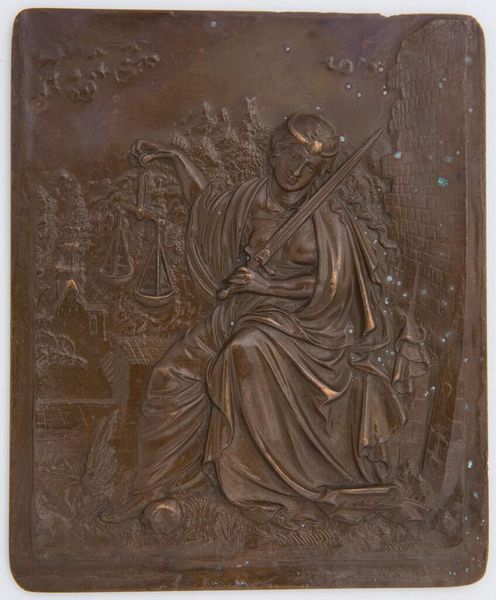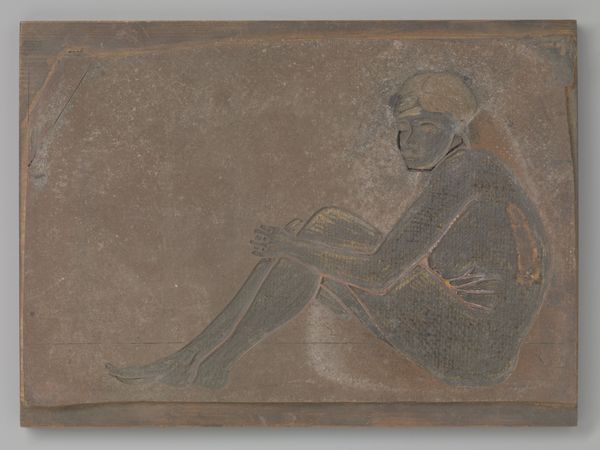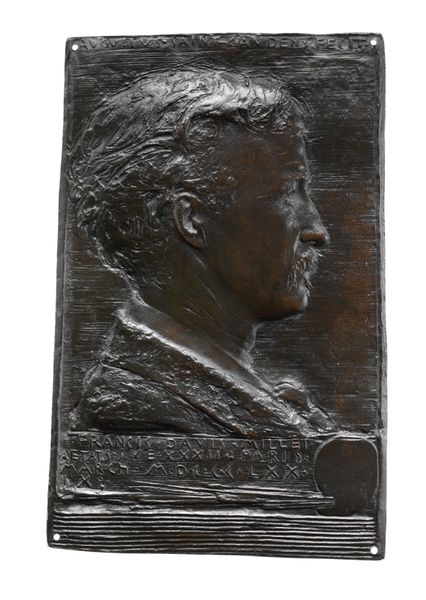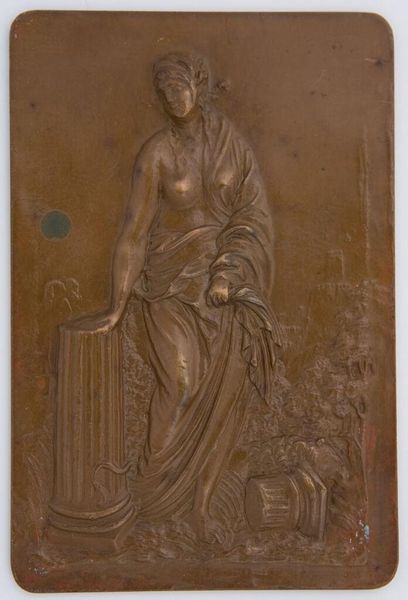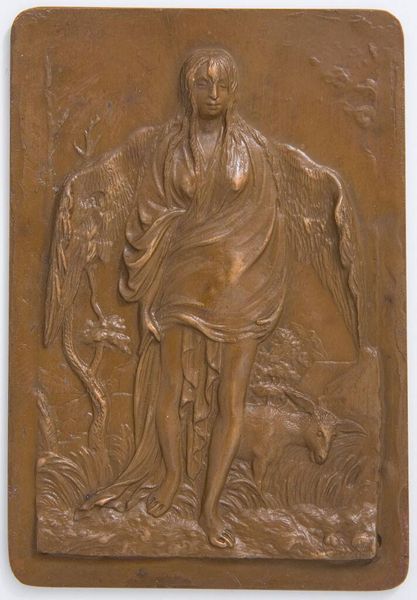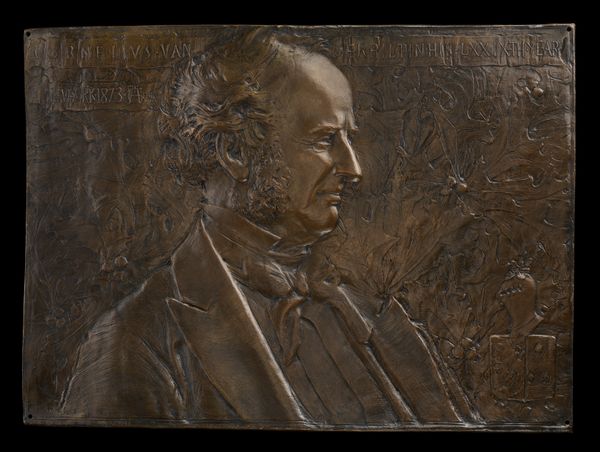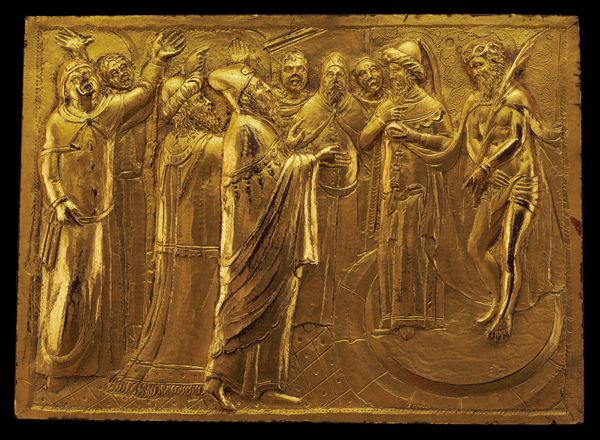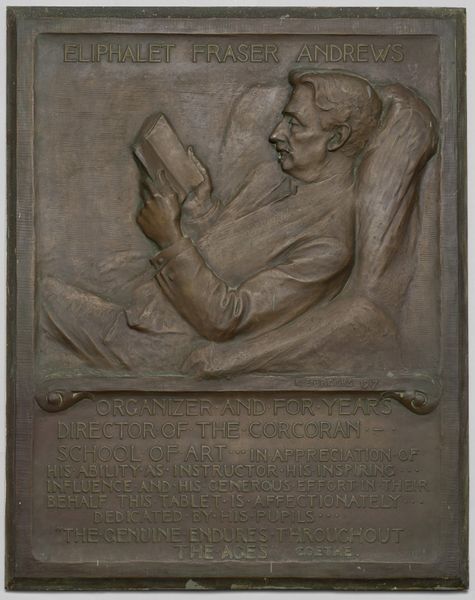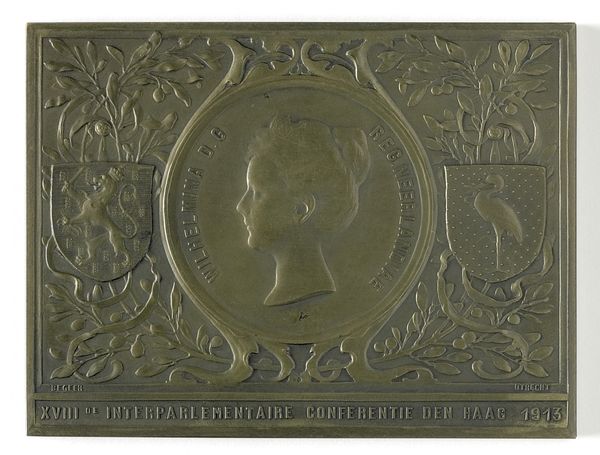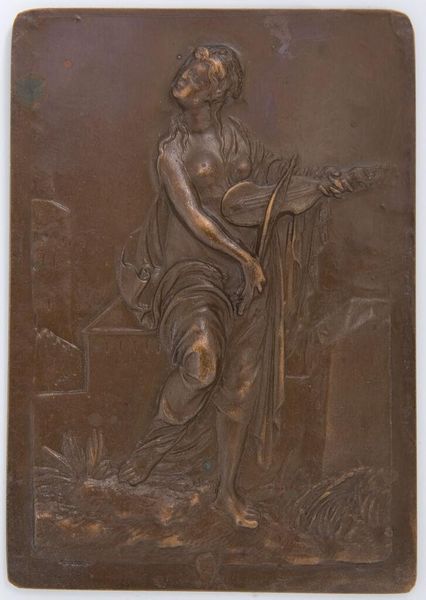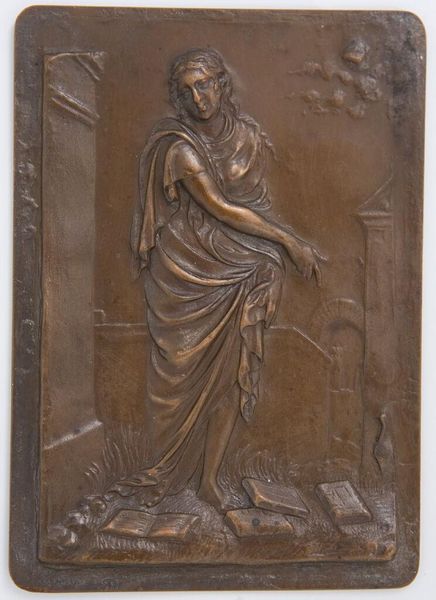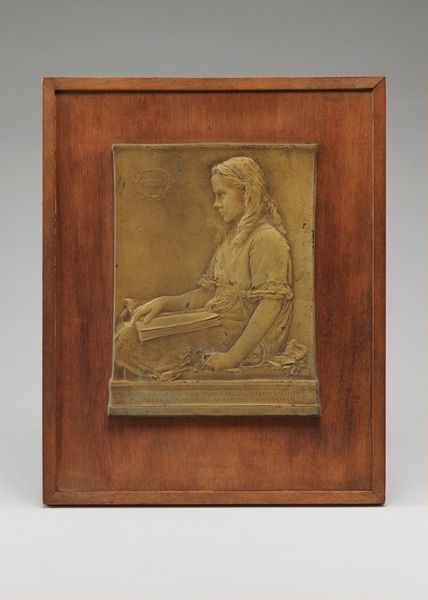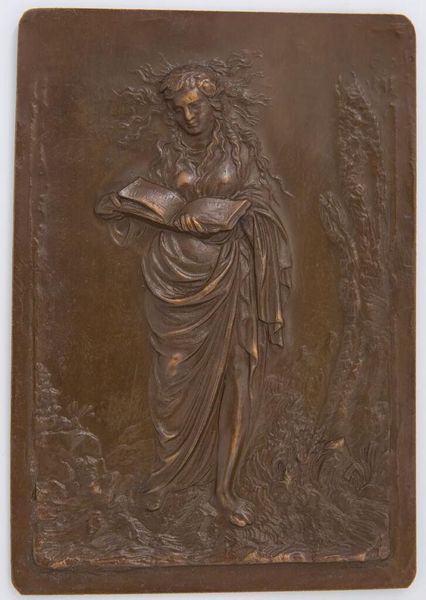
carving, bronze, sculpture
#
portrait
#
medieval
#
carving
#
sculpture
#
bronze
#
sculpture
#
carved
#
history-painting
#
profile
Dimensions: 33 1/2 x 40 in. (85.1 x 101.6 cm)
Copyright: Public Domain
Editor: This bronze sculpture, titled "Edward Alexander MacDowell," was created by Helen Farnsworth Mears between 1906 and 1907. It feels almost medieval, with its relief-style portrait. What strikes me is the inscription above the figure: “Night has fallen on a day of deeds.” What do you make of this piece? Curator: That inscription, hinting at mortality, really focuses our attention. Considering the period, early 20th century, we're looking at the tail end of the Gilded Age, a time of immense social and economic upheaval, even unrest. Does the portrayal of MacDowell, the artist, hint at something deeper, perhaps about the role of the artist in a changing society, or the brevity of life? Do you think the "day of deeds" refers specifically to his accomplishments, or perhaps something broader? Editor: It’s interesting you mention the social context. I hadn't considered it in that light. Perhaps it reflects a longing for a simpler time, a harkening back to traditional values during an era of rapid industrialization? Or even anxieties about the future. Curator: Exactly. The profile pose itself speaks to this classical ideal. Mears was a celebrated artist, working in a predominantly male field, so perhaps we could consider how her own identity and position influenced her choices. She's immortalizing another artist, but doing so during a transformative moment. Editor: So you’re suggesting she might be making a statement about art’s enduring power against the backdrop of social change? Curator: It's a possibility. And that's what makes this work so compelling. It invites us to consider these interconnected themes – individual accomplishment, societal shift, and the artist’s legacy. What’s your take-away now? Editor: I initially saw a simple portrait. Now, thinking about the artist's life and times, it’s like the sculpture’s bronze surface is reflecting a complex dialogue about art, society and time itself.
Comments
No comments
Be the first to comment and join the conversation on the ultimate creative platform.
